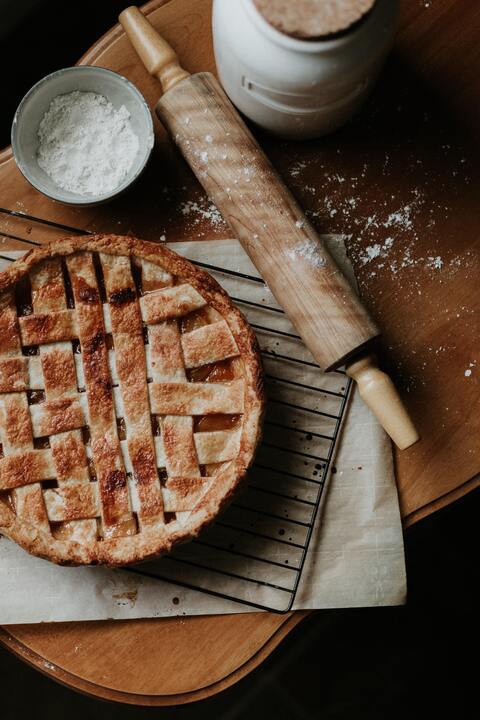Pie Over the Decades

When people talk about pies, many talk in regards to Thanksgiving or as a staple American dessert to serve during dinner time. The popular expression “as American as apple pie” has made pie a symbol for the United States. However, apple pie, one of the most loved pies around the holidays, actually originated in England. During England’s medieval era, pies were known as “pyes,” and many different kinds of meats were used to fill them. Sugar was a rare, expensive commodity, so fillings included duck, lamb, and beef with different spices. The crust was also known as a “coffin” and was used solely as a container for the rest of the pie. As time progressed into the 15th and 16th centuries, sugar started to become more readily available and the crust was made to be eaten. As sugar’s popularity increased, the savory dish became more sweet. Still, in 1621, the first celebration of Thanksgiving, there were savory meat pies. Even though these pies contained meat, fruit and cinnamon were still used. Pies were used more for than just a meal—they were used as a means to save food. The crust on top was used to keep the food fresh, especially during the colder months.
As continental migration progressed, colonial settlers increased their use of local ingredients. Many discovered sweeter apples and ingredients to use in pies as better alternatives. Crab apples were initially the most popular. They are only found in the United States and are sour fruits; however, since they were not very appetizing, cooks used fruits that they brought with them, some of which were different kinds of apples. These apples were mostly used for ciders, so they were not as great to make pies with. Around the 1800s, farmers started to find different kinds of apples(14,000+ different species!) that were much better options to eat. As these apples started to be grown, the ubiquitous apple pie we see today started to proliferate. In the late 1800s, Professor Charles Watson Townsend ate apple pie frequently, specifically in the Cambridge Hotel. He always ordered ice cream along with it. One day, an acquaintance asked him what he was having and he expressed how there was not a name, so they named it pie a la mode. Ever since then, journalists and reporters heard that the Cambridge Hotel was calling it that and made it a nationwide hit! At the end of the 1800s there were only under 10 pie recipes, but a century later, there were almost 100. Since then, we have come to know many more variations of pies. As we enjoy our ‘classic’ apple pie during the holiday season, it’s interesting to think about the history and the usage of this method of food preparation, because it wasn’t always used as pie we know today – or with apples either!
Photo credit – Unsplash